
NGC 6744 is an intermediate spiral galaxy in the constellation Pavo (Peacock). Its velocity with respect to the cosmic microwave background is 802 ± 3 km/s, which corresponds to a Hubble distance of 38.6 ± 2.7 Mly (11.82 ± 0.83 Mpc). However, 21 non redshift measurements give a distance of 23.63 ± 1.68 Mly (7.244 ± 0.514 Mpc). It was discovered on 30 June 1826 by Scottish astronomer James Dunlop, observing from Parramatta, Australia.

NGC 4027 is a barred spiral galaxy approximately 83 million light-years away in the constellation Corvus. It is also a peculiar galaxy because one of its spiral arms goes out more than the other. This is probably due to a galactic collision in NGC 4027's past.

NGC 5112 is a barred spiral galaxy in the constellation Canes Venatici. It was discovered on 17 March 1787 by German-British astronomer William Herschel. This galaxy is in close physical proximity to the edge-on dwarf spiral NGC 5107.

NGC 4790 is a barred spiral galaxy located in the constellation of Virgo. Its velocity with respect to the cosmic microwave background is 1679 ± 24 km/s, which corresponds to a Hubble distance of 80.8 ± 5.8 Mly (24.76 ± 1.77 Mpc). In addition, six non-redshift measurements give a distance of 74.75 ± 4.07 Mly (22.917 ± 1.249 Mpc). It was discovered on 25 March 1786 by German-British astronomer William Herschel.
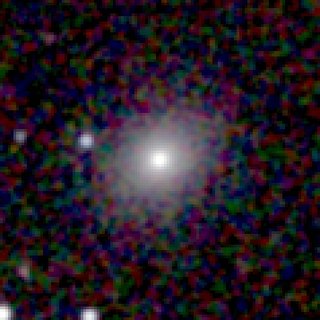
NGC 7057 is an elliptical galaxy located about 230 million light-years away in the constellation of Microscopium. NGC 7057 was discovered by astronomer John Herschel on September 2, 1836.
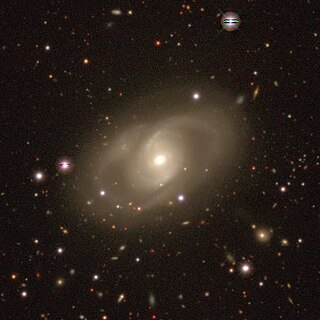
NGC 7060 is an intermediate spiral galaxy located about 200 million light-years away in the constellation of Microscopium. The spiral arms of NGC 7060 appear to overlap. NGC 7060 was discovered by astronomer John Herschel on September 2, 1836.

NGC 7070 is a spiral galaxy located about 100 million light-years away in the constellation of Grus. It has a close companion galaxy called NGC 7070A. NGC 7070 was discovered by astronomer John Herschel on September 5, 1834.
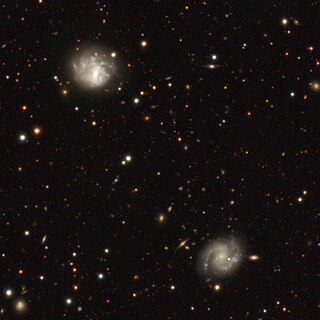
NGC 7072 is an intermediate spiral galaxy located about 210 million light-years away in the constellation of Grus. NGC 7072 was discovered by astronomer John Herschel on September 5, 1834.

NGC 7075 is an elliptical galaxy located about 290 million light-years away in the constellation of Grus. NGC 7075 was discovered by astronomer John Herschel on September 4, 1834. It is classfied a radio galaxy.
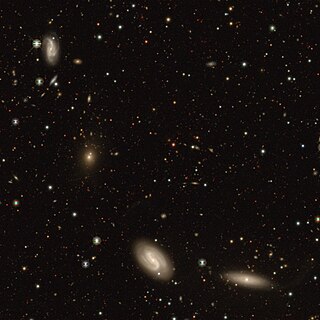
NGC 7087 is a barred spiral galaxy located about 215 million light-years away in the constellation of Grus. NGC 7087 was discovered by astronomer John Herschel on September 4, 1834.

NGC 4498 is a barred spiral galaxy located about 50 million light-years away in the constellation Coma Berenices. NGC 4498 was discovered by astronomer William Herschel on March 21, 1784. NGC 4498 is a member of the Virgo Cluster.
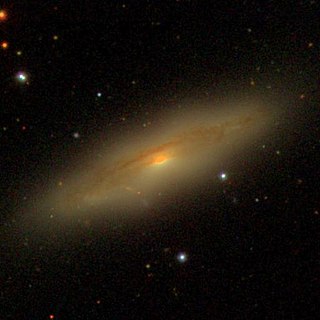
NGC 4586 is a spiral galaxy located about 50 million light-years away in the constellation Virgo. The galaxy was discovered by astronomer William Herschel on February 2, 1786. Although listed in the Virgo Cluster Catalog, NGC 4586 is considered to be a member of the Virgo II Groups which form a southern extension of the Virgo cluster. NGC 4586 is currently in the process of infalling into the Virgo Cluster and is predicted to enter the cluster in about 500 million years.
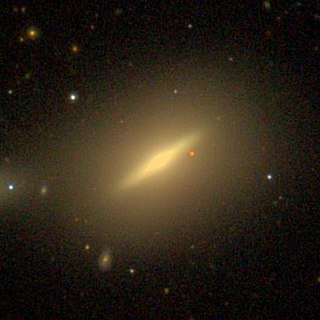
NGC 4638 is an edge-on lenticular galaxy located about 50 million light-years away in the constellation Virgo. NGC 4638 was discovered by astronomer William Herschel on March 15, 1784. The galaxy is a member of the Virgo Cluster.

NGC 668 is a spiral galaxy located 200 million light-years away in the constellation Andromeda. It was discovered by astronomer Édouard Stephan on December 4, 1880 and is a member of Abell 262.
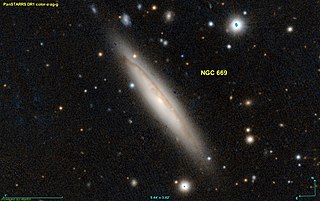
NGC 669 is an edge-on spiral galaxy with an active galactic nucleus located 200 million light-years away in the constellation Triangulum. NGC 669 was discovered by astronomer Édouard Stephan on November 28, 1883 and is a member of Abell 262.

NGC 700 is a lenticular galaxy located 200 million light-years away in the constellation Andromeda. NGC 700 was discovered by astronomer Bindon Stoney on October 28, 1850. It is also a member of Abell 262.

NGC 705 is a lenticular galaxy located 240 million light-years away in the constellation Andromeda. The galaxy was discovered by astronomer William Herschel on September 21, 1786 and is also a member of Abell 262.

NGC 709 is a lenticular galaxy located 150 million light-years away in the constellation Andromeda. It was discovered by the Irish engineer and astronomer Bindon Blood Stoney on October 28, 1850 and is a member of the galaxy cluster Abell 262.

NGC 7836 is an irregular spiral galaxy located about 260 million light-years away in the constellation Andromeda. It was discovered by the astronomer Lewis Swift on September 20, 1885.

IC 1953 is a barred spiral galaxy situated in the constellation of Eridanus. Located about 83.4 million light years away, it is a member of the Eridanus cluster of galaxies, a cluster of about 200 galaxies. It was discovered by DeLisle Stewart in 1899.




















